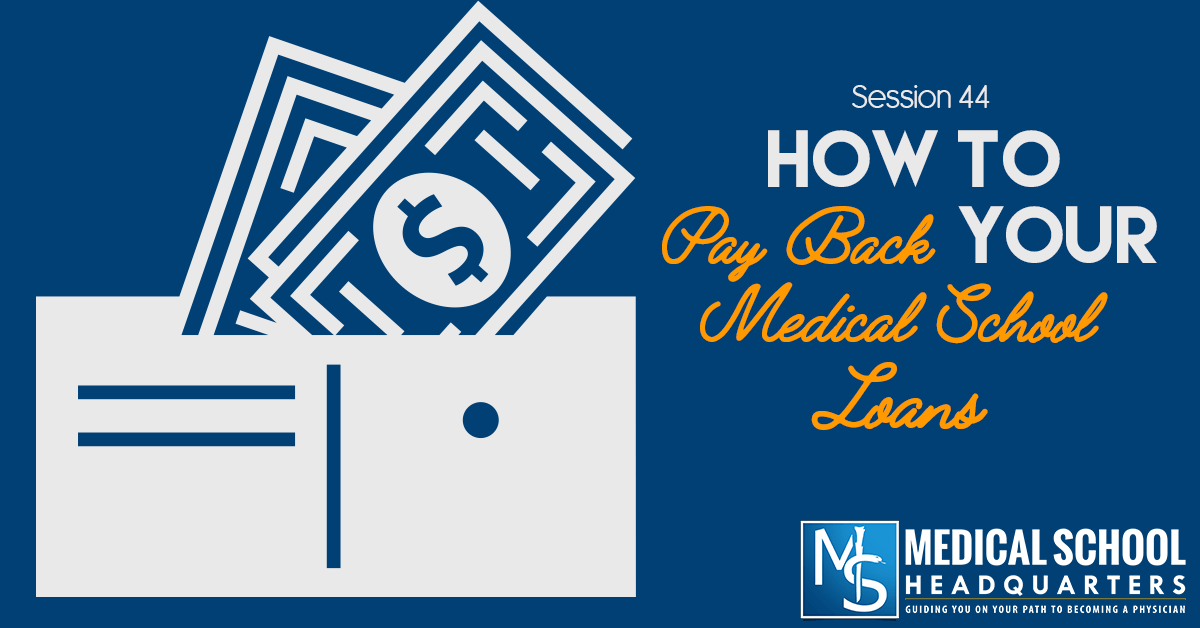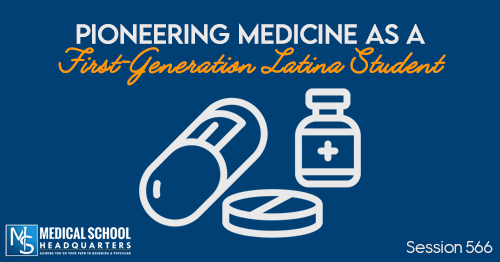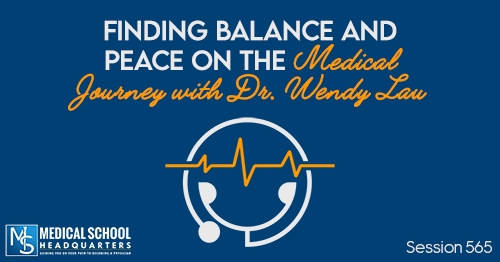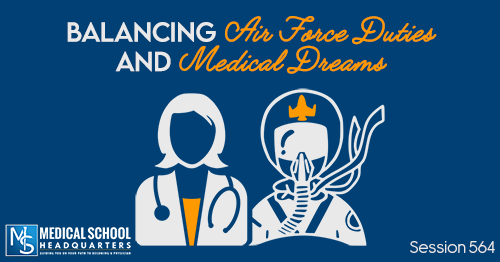Apple Podcasts | Google Podcasts
Session 44

In today’s episode, I talk with Tony Sozzo for the second time on the show, this time about how to pay back your medical school loans.
We talk about the different options available for loan repayment, how they each impact your bank account at the end of the day, and some things you need to consider.
You may not appreciate this topic as a premed, but this information will come in handy eventually. You need to understand what it’s like on the other side of medical school as you’re paying back several hundred thousand dollars worth of student loans.
Listen to this podcast episode with the player above, or keep reading for the highlights and takeaway points.
The average debt medical students have:
- $170,000 for medical schools as a whole
- $185,000 – 190,000 for private schools
[Related episode: Interview with a Director of Student Financial Planning.]
Average resident physician salary:
- $50,000-$55,000 (depending on location)
Why is it so expensive to go to medical school?
- Equipment
- Simulated patients
- Paying for good instructors/professors
- 2/3 of the money goes to educational instruction
Choosing medical schools based on tuition:
Don’t focus on tuition costs when choosing a medical school. You have to go deeper than that. A $10,000-difference over the course of your lifetime isn’t going to make that much of a difference.
Instead, look into these considerations:
- Match list
- Safety
- Comfort
- The school’s philosophy and culture
[Related episode: How to Choose a Medical School and Put Together a School List.]
Medical school loan repayment options:
For any type of repayment plan, you want to leave yourself with as many options as possible. Options make loan repayment work in your life.
- How much debt do you have?
- How long are you going to take to repay it?
- We’ll figure out the monthly payment from those considerations.
For example, if you have a debt of $170,000 and you want to pay it over a period of 10 years (120 months), you will have a very high monthly payment. Extend that to 25-30 years, and you have a lower monthly payment because it’s stretched out. But you will pay more interest over time.
Example Timelines for Paying Back Medical School Loans
If you choose a 10-year repayment plan for $170,000 at 6.8%, you’ll pay:
- $1,956.37 – Monthly Principal & Interest
- $234,763.87 – Total of 120 Payments
- $64,763.87 – Total Interest Paid
If you choose a 25-year repayment plan for the same $170,000 at 6.8%, you’ll pay:
- $1,179.92 – Monthly Principal & Interest
- $353,976.77 – Total of 300 Payments
- $183,976.77 – Total Interest Paid
The pros of a 10-year plan:
It’s the cheapest plan in terms of the interest paid. With the 25-year plan, more interest is added even if you have a lower monthly payment.
Now, picture this scenario:
- Medical school debt: $170,000
- Period: 10 years
- Monthly principal and interest: Around $2,000/month payment
Consider your income:
- The average residency salary: $50,000
- After withholdings: $3,400/month
- Subtract rent, utility bills, insurance, food, cars, gasoline…
How much do you have left to pay back your loans on a resident’s salary? Not very much.
How much do you have left to pay back your loans on a resident's salary? Not very much.Click To TweetOther existing, older repayment plans
Graduated repayment plans for medical school loans
- A graduated plan is when you start with a small monthly payment, but then it goes up gradually over time.
Newer repayment plans for medical school loans:
Income-based repayment plans, income-driven plans, or Pay-As-You-Earn (PAYE):
- To decide your minimum monthly payment, they look at your discretionary income and assume only a small percentage of that can go toward your loan repayment
- Major qualification: Partial financial hardship (if your loan amount far exceeds 10%-20% of your income)
View a government website explanation of these repayment plans here.
How big are your monthly payments with income-derived repayment options?
- 20% plan: $642/month
- 15% plan: $410/month
- Pay-As-You-Earn: $273/month
*Remember, this is based on your income, so if your income increases, your minimum monthly payments may increase, as well.
Benefits of the newer repayment plans:
These income-based repayment plans give you breathing room with modest loan repayments. But keep in mind that these are all U.S. government plans and only apply to federal student loans, not private loans.
Income-based repayment plans give you breathing room with modest loan repayments.Click To TweetLoan forgiveness:
With some of these repayment plans, the government will forgive your debt after a certain number of payments, which is great! However, you may be taxed on the amount forgiven.
Why federal loans are better than private loans for your medical school debt:
- They’re better because of the safety and protection
- They don’t capitalize the interest while you’re in school
- They have loan forgiveness plans
The “public service loan forgiveness” plan:
- Doesn’t have to be consecutive
- At least 30 hours a week in a not-for-profit facility
[Related episode: Don’t Count on Public Service Loan Forgiveness.]
When going in for job interviews, ask two questions:
- Are you a not-for-profit facility?
- Who will pay me?
- Around 80%-90% of hospitals are not-for-profit
What happens to U.S. medical school graduates not getting residency spots?
Protections exist for graduating physicians who fail to match into residency spots their first year.
- In-school deferments
- Forbearance (doesn’t hurt your credit and buys you time for about 6 months)
- Employment deferment
Some pieces of advice for premed students:
- Leave yourself with as many options as possible at the end of the day.
- Stay with federal student loans over private loans to have more flexibility.
- Be mindful of your credit card debt. Use credit cards wisely. Use them for emergencies. They are not a lifestyle!
- Talk to a tax expert and a financial planner to determine what’s best for you.
Links and Other Resources
- Check out my Premed Playbook series of books (available on Amazon), with installments on the personal statement, the medical school interview, and the MCAT.
- Related episode: Setting Yourself Up for Financial Success, Starting Now.
- Related episode: How to Provide for Your Family as a Premed.
- Need MCAT Prep? Save on tutoring, classes, and full-length practice tests by using promo code “MSHQ” for 10% off Next Step full-length practice tests or “MSHQTOC” for $50 off MCAT tutoring or the Next Step MCAT Course at Blueprint MCAT (formerly Next Step Test Prep)!











